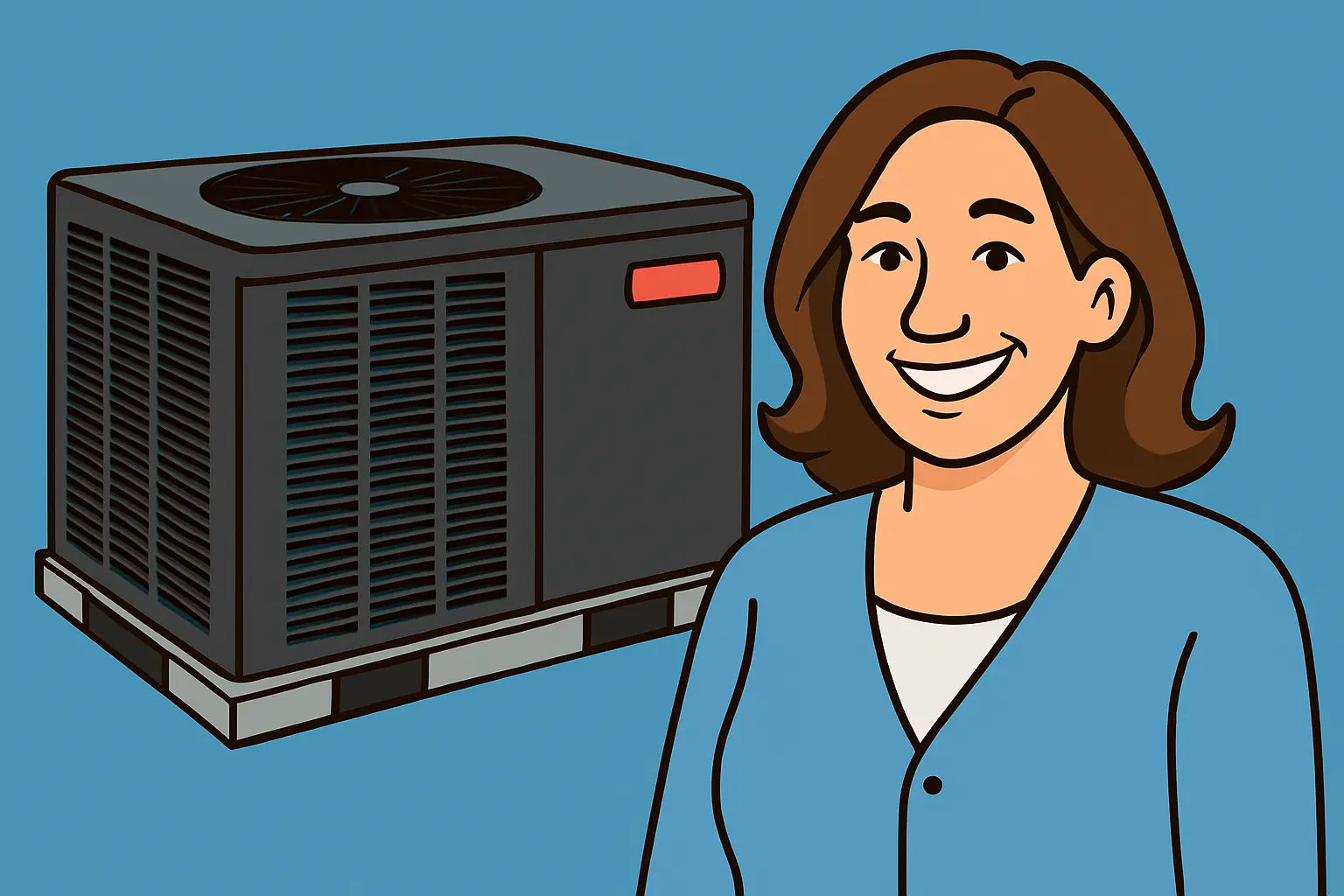Hi Friends, Samantha Here 🌬️
Let’s talk about something every homeowner dreads: your AC not cooling like it should. Specifically, we’re focusing on the Goodman Horizontal Air Conditioner 3-Ton GPCH33631. If your home isn’t hitting the comfort mark, don’t panic—most cooling problems are traceable and often preventable.
In this blog, I’m sharing a full troubleshooting roadmap. We’ll cover airflow, refrigerant, electrical issues, condensate drains, thermostat placement, and maintenance, all in plain language, with tips that even non-technical homeowners can follow safely.
1. Check Airflow First
Airflow issues are the most common reason for low cooling output. Even a perfect AC can’t work miracles if air can’t move freely.
Common causes:
-
Dirty or clogged filters. Check monthly; replace every 1–3 months depending on use.
-
Blocked or kinked ductwork. Inspect accessible ducts for pinch points or disconnected sections.
-
Obstructed vents. Furniture, curtains, or rugs in front of supply vents can restrict airflow.
Tip: A simple test is to measure temperature difference between return and supply vents. For a properly charged and functioning 3-ton unit, you should see around 16–22°F difference. If not, airflow is likely the culprit. For extra guidance, check the ENERGY STAR maintenance checklist.
2. Inspect the Condenser and Evaporator Coils
Dirty coils reduce heat exchange efficiency and can mimic low refrigerant symptoms.
-
Condenser coils (outside unit) can get clogged with leaves, dirt, and debris. Spray gently with water to clean.
-
Evaporator coils (inside the unit or ducted section) can accumulate dust or mold. Cleaning might require a soft brush or professional coil cleaner.
Pro tip: Never use a harsh wire brush—it can damage aluminum fins. Keeping coils clean restores airflow and improves cooling performance.
3. Check Refrigerant Levels
The GPCH33631 uses R-32 refrigerant, which requires careful handling. Low cooling can signal undercharging or a leak.
Common causes:
-
Factory undercharge (rare but possible).
-
Line leaks or fittings that weren’t tightened during installation.
Safety first: R-32 is mildly flammable (A2L classification), so if you suspect a leak, call a certified technician rather than attempting a DIY top-off. ACHR News has an excellent R-32 guide on safe handling and charging procedures.
4. Examine the Electrical System
Low voltage or electrical faults can reduce compressor and fan performance, leading to poor cooling.
Checklist:
-
Ensure the dedicated 208–230V single-phase breaker is functioning correctly.
-
Check for loose wire connections at terminals and control boards.
-
Inspect capacitor health—weak or failing capacitors can reduce motor efficiency.
Electrical issues are a common culprit behind inconsistent cooling. If you notice frequent breaker trips, flickering lights, or humming noises from motors, it’s time to call a licensed electrician.
5. Verify Thermostat and Controls
Even if everything else is perfect, the system can underperform if your thermostat is misreading temperatures.
Common mistakes:
-
Thermostat placed near sunlight or heat sources.
-
Drafts from doors or vents affecting readings.
-
Incorrect system mode or fan setting.
Upgrade tip: Using a smart thermostat can improve system response and efficiency. Consumer Reports’ smart thermostat guide is an excellent reference for compatible models.
6. Inspect the Condensate Drain
A blocked condensate line can trigger low airflow or even force the system to shut down to prevent water damage.
Look for:
-
Standing water around the unit.
-
Slow drainage or backups in the condensate pan.
Solution: Clear the line with mild vinegar and warm water. Ensure proper slope and trap configuration to allow free drainage. This small fix can restore full cooling efficiency.
7. Consider Environmental Factors
Sometimes low cooling output isn’t about the AC at all. Check:
-
Windows or doors left open.
-
Poor insulation in attics or walls.
-
Heat gain from large south-facing windows or appliances.
These external factors can make even a perfectly installed 3-ton unit seem underpowered. Adding blinds, insulation, or reflective window film can help.
8. Know When to Call a Pro
If you’ve tried all the steps above and your GPCH33631 still isn’t cooling properly, it’s time to call in a certified R-32 technician. They can:
-
Check refrigerant pressures and top off safely.
-
Inspect compressor and fan motor function.
-
Evaluate electrical boards, relays, and wiring integrity.
Remember, improper DIY refrigerant handling can be dangerous and may void your warranty. For official maintenance tips, Goodman provides a homeowner-friendly guide.
Samantha’s Send-Off
There you have it! Troubleshooting low cooling output on your Goodman GPCH33631 doesn’t have to be stressful. 🌬️
Start with airflow, check filters, coils, and drainage, then verify refrigerant, thermostat, and electrical setup. If all else fails, call a pro—there’s no shame in getting certified help for R-32 systems. With a little care and preventive maintenance, your AC can keep your home crisp and comfortable all summer.
Need refrigerant tips for this unit? Visit my guide: R-32 Refrigerant Safety and Handling Tips for the GPCH33631.
Stay smart, stay cool,
— Samantha, Home Comfort Advisor







